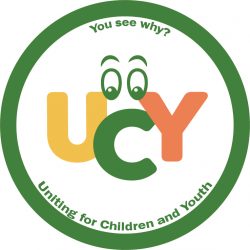Question 2 – Zone 7 Responses
Contents
-
-
- The Question in brief
- Response from:
- Kim Woods
- No Responses
-
Link: See Responses to Question 2: Parts 1 – 6 for a table summary of the first 6 parts of Question 2.
The Question in Brief
There are 8 parts to this question. “Yes” or “No” answers were required for the first 6 parts, but candidates were welcome to qualify their answers. Part 7 required a prose answer, and part 8 was optional. In brief, the question asked the following. The full text of the question is found at: Question 2 – Systemic Innovation.
- Do you believe that public education needs to evolve from its industrial management practices to ones more appropriate for today? Y/N
- Do you agree that formal scheduling is a major barrier to systemic innovation? Y/N
- Would you act to establish an OCDSB Systemic Innovation Advisory Committee made up of student, parent, teacher, administrator, ministry, university professor, business and community representatives? Y/N
- If “Y” to #3, would you act to have the committee established in time for systematic field studies to begin in September 2019? Y/N
- Would you support developing a board wide inventory of innovative actions by teachers and principals? Y/N
- Would you help to create partnerships with universities that want to conduct studies of how school boards can transition from the industrial model to one that suits today’s needs? Y/N
- What is your vision of the ideal school?
Kim Woods
- Y
- N
- Y
- Y
- Y
- Y
- What is your vision of the ideal school? It’s time to recognize that a one-size-fits-all curriculum, in reality, fits nobody.
I can imagine an ideal school where all students are happy to arrive each morning, feel engaged throughout the day, and leave with new and exciting knowledge. In this school, children learn not just academics, but also how to become healthy, fulfilled people.
The students of my ideal school excel at communication, emotional awareness, conflict resolution, and human connection. These principles would be present in the teaching of all traditional academic subjects.
Smaller sized classrooms would allow teachers to provide necessary individual attention, but still foster a sense of community. Guided by the teacher, students would also complete individual learning plans, giving the teacher a sense of each person’s interests and disinterests, strengths and weaknesses, and goals.
Real-world projects would be a key feature of the school. Whereas the current school model teaches kids concepts in a vacuum (few children understand the practical use of an algebra problem, for instance), my school would create context for every concept. Every major lesson would have a project attached to it. Kids wouldn’t just read antiquated poetry in English; they’d write their own poetry, have it bound into an anthology, and distribute it for publication. They wouldn’t just watch period films in history class; they’d write and direct an original short film about an intriguing moment in history. You’d find kids designing websites, patenting new ideas, building bridges to scale, and raising money to donate to their local communities.
Teachers would develop lessons thematically so that they span every academic subject. A unit on poverty would see social studies teachers focusing on the economics of poverty, math teachers comparing the costs of living in various cities, English teachers contrasting Dickens’ portraits of life among the London poor to portraits of the modern-day poor, and science teachers examining solutions for low-cost, healthy food.
Each day would begin with a discussion of the current class projects. Academic experiences would occupy the remainder of the day. To encourage independent discovery and learning, academic lessons would be split into two halves. The first half would be a basic skills seminar, and the second half an advanced class. Students could choose to stay the second half or to work on their current project, read, or pursue independent study. The “second halfers” would be the students with the greatest passion for the subject.
No Response
– Jennifer Jennekens

